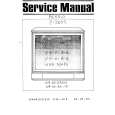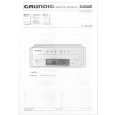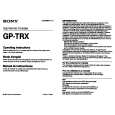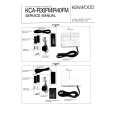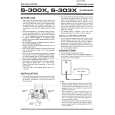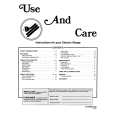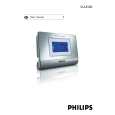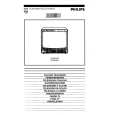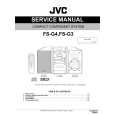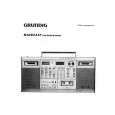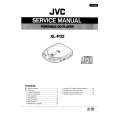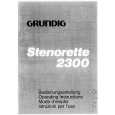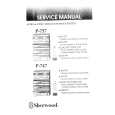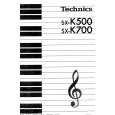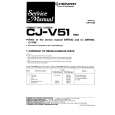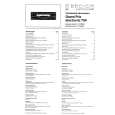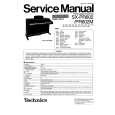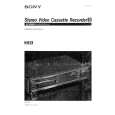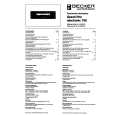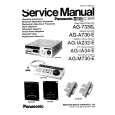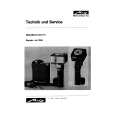|
|
|
Kategorie
|
|
Informacje
|
|
Polecamy
|
|
|
 |
|
|
Dla tego produktu nie napisano jeszcze recenzji!
 ;
Schematy są ale można wysilić się i zrobić kolorowy skan i o większej rozdzielczości. Wtedy schematy płytek będą czytelniejsze. Całość super jako wartość merytoryczna. Wszystkie dane potrzebne do podłączenia różnego rodzajów urządzeń takich gramofon, CD itd.
 ;
Szybko, sprawnie i tanio. Serwis godny polecenia. Będę polecał innym
 ;
Ogólnie jest OK, z wyjątkiem obrazu płyty głównej, który jest miejscami mało czytelny, ale można sobie poradzić.
 ;
Dokładna dokumentacja, pomogła w szybkiej naprawie telewizora. Dziękuję!
 ;
jedyne do czego mogę mieć zastrzeżenie to jakość zdjęć zawartych w przesłanej instrukcji serwisowej ponieważ są fatalnej jakości, praktycznie nieczytelne. tak poza tym jestem zadowolony to jest to czego szukałem.
AK - 44 CHASSIS
2.10 Video Path
The detected video signal is output from pins 18 of IC403, to sound traps Z403/404. The video is taken from the other side via the appropriate filter to Pin 18 of IC403. (1.2 p to p) Video to the Scart connectors is taken after R458 to Pin 19 of the Scart connector. The CVBS_TXT output Pin29 output is fed to IC501 Pin 34 (for Teletext). The video signal is sometimes labelled CVBS on the circuit diagram. This stands for Composite Video Blanking & Sync. The composite signal is input Pin 13 (Video input) of IC403. This IC carries out all of the luma/Chroma processing internally and also provides the customer control functions of brightness, contrast, sharpness and saturation. IC403 is I²C bus controlled and incorporates auto greyscale circuitry and internal luma/chroma delay lines. The resulting R.G.B drive is output on pins 30,31 and 32. The R.G.B passes via connector PL405 to the CRT base PCB. Here the R.G.B signal is amplified by IC901 to provide drive for the cathodes of the CRT. IC901 produces a feedback signal, which is fed to IC403 (pin 33) for blanking and auto greyscale correction.
2.11 Sound Path
The demodulated mono sound is taken from pin 55 of IC403 directly to the sound output stage IC401 Pin 7. The output signal from IC401 is Volume controlled achieved within IC403 using the I²C bus line from IC501. To limit the volume at the specified out put the A_out pin 55 is fed to IC 401 through a voltage divider R455 and R454. Muting of the output stage is provided from Pin 46 of IC501 to pin3 of IC401/6 of IC301. IN the stereo model the IF from PINS 10 & 11 of the tuner passes through Z401 and the output signal goes through pins 1&2 of IC403. The output QSS signal from IC 403 is taken from pin 11 and sent to audio processor IC700. The left channel is output on PIN 29 and the right channel output is on PIN 28. Then to IC301 after passing through a voltage divider R454/R455 for the right channel and R463/R464 for the left channel. IC403 handles also the AM modulated signals in L/L� systems at pins 1&2.
2.12 AV Input Signal Path
2.12.1 Video and Sound IC403 has three CVBS inputs at pins 18,20 and 22.The composite video signal of AV1 is taken from pin 20 of the Scart connector to pin 20 of IC403. The mono sound signal is taken from pins 2 and 6 of the Scart sockets to the switching transistors Q101. The transistor switches the audio depending on the source, and is then fed to pin14 of lC403. When AV input is selected pin 5,6,7 of the microprocessor IC50I is taken high, this switches the IC403 to external input mode via I²C BUS. This connects the video inputs on pins 20 or 22 to IC403 and the audio input on pin 14 to the audio out on pin 55 (via the internal volume control circuit) The signal paths are then as for videopath. The chassis can detect the video signals on Scart using pin 8 switching voltage at pin 56 of IC501. 2.12.2 R.G.B The R.G.B signals from pins 7,11 and 15 of the Scart connector are fed to the R.G.B input pins (25,26,27) of IC403. R.G.B operation can be enabled by either taking pin 16 of the Scart connector high, this high is fed to Pin 28 of IC403, or via the l²C bus the microprocessor sets IC403 to forced R.G.B mode in which the video processor generates its own fast blank signal. This puts the IC into external R.G.B mode and selects the inputs on pins 25,26 and 27, overriding the video input on pin 20/22. Note: when using R.G.B input the contrast, brightness and colour controls will still operate.
3. TUNER
Either a PLL or a VST tuner is used as a tuner. UV1316 (VHF/UHF) is used as a PLL tuner. For only PALM/N, NTSC M applications UV 1336 is used as the PLL tuner. UV 1315 (VHF/UHF) is used as a VST Tuner.
Channel coverage of UV1316
BAND Low Band Mid Band High Band OFF-AIR CHANNELS FREQUENCY CHANNELS RANGE (MHz) E2 to C 48.25 to 82.25 (1) E5 to E12 175.25 to 224.25 E21 to E69 471.25 to 855.25 (2) CABLE CHANNELS FREQUENCY CHANNELS RANGE (MHz) S01 to S08 69.25 to 154.25 S09 to S38 161.25 to 439.25 S39 to S41 447.25 to 463.25
(1). Enough margin is available to tune down to 45.25 MHz.
9
|
|
 |
> |
|
